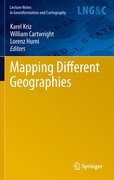
To ‘everyday consumers’ of information who use contemporary communication devices the ‘not-real’ is experienced almost every time they turn on a television, watch a movie or access some information via the Web. They are instantly taken to another world, and they can explore another reality. Professional designers and cartographers use the not-real (representations that range from paper maps of fantasy to computer-generated virtual reality) to deliver information about real, imaginary or non-human / non-physical geographies. In many cases the map metaphor is employed to provide representations of imaginary or non-human / non-physical geographies and users can use existing map reading skills tointerpret these representations of ‘different’ geographies. This book addresses the many areas where different geographies are being specified and then represented using the map metaphor. It provides examples of new theories being developed and practical mapping applications that are used to inform about or analyse the elements of these geographies. Addresses how 'different' geographiesmight be mapped Provides examples of new theories being developed Describes practical mapping applications INDICE: Conceptual and Theoretical Principles of MDG.- Structural and Methodological Issues of MDG.- Use Cases and Examples of MDG.
- ISBN: 978-3-642-15536-9
- Editorial: Springer
- Encuadernacion: Cartoné
- Páginas: 255
- Fecha Publicación: 16/09/2010
- Nº Volúmenes: 1
- Idioma: Inglés
